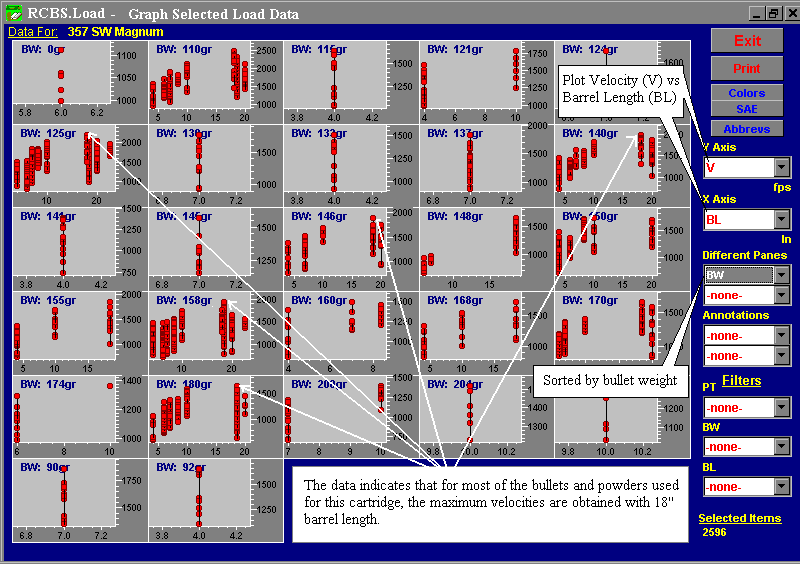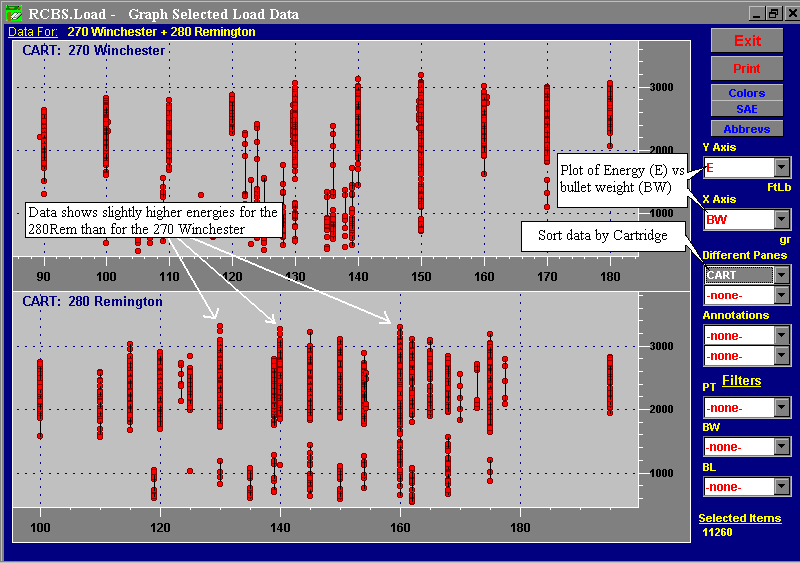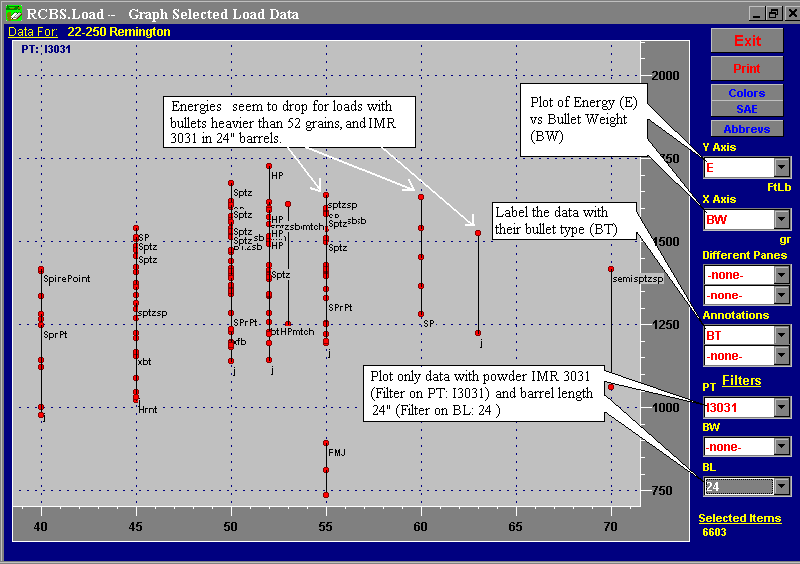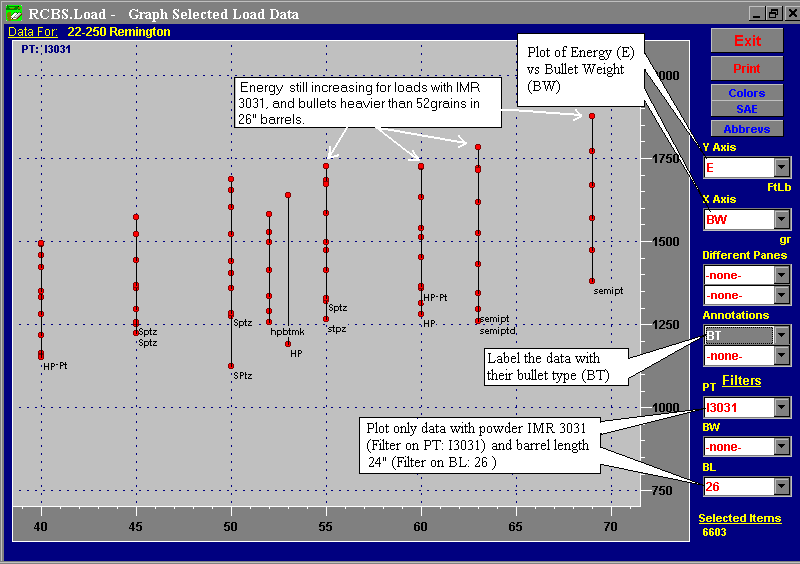
GMDR.Load makes available to the user an enormous amount of reloading information via its electronic data manuals, plus the user's own entered handload data. With access to such a substantial database, and the unique analyzing features of GMDR.Load, it is very simple to look at how cartridge component changes affect the overall performance of a cartridge. The Graphic Utility of GMDR.Load is a hugely useful tool in the study of the behavior of a cartridge-firearm combination, based on real handload data. It gives the user the ability to much more deeply analyse - cartridge efficiencies, powder type properties, primer effects, and as a whole, the effect that each component and firearm characteristic has on the chamber-barrel "Internal Ballistics" - than ever possible previously by hand, or with other non-graphic software.
Hundreds of different plots can be obtained for detailed studies of the different cartridge components. We give on these pages a few examples on how the GMDR.Load plotting of "Real Handload Data" can answer questions formulated by the user:
Example # 1: Can I get more muzzle velocity in 357 Magnum by using the standard loads published in Reloading Manuals, just by shooting with longer barrels?.

The data plotted has been extracted from 11 of the most recently published Reloading Manuals.
Example # 2: Is there really an answer to the 270 Win / 280 Rem superiority question? How much do the muzzle energies really differ by?

The data plotted has been extracted from 62 current and historical Reloading Data Manuals.
Example # 3: What is the most efficient bullet weight in 22-250 with IMR 3031? Does barrel length of my firearm influence in the selection?


The data plotted has been extracted from 62 current and historical Reloading Data Manuals.